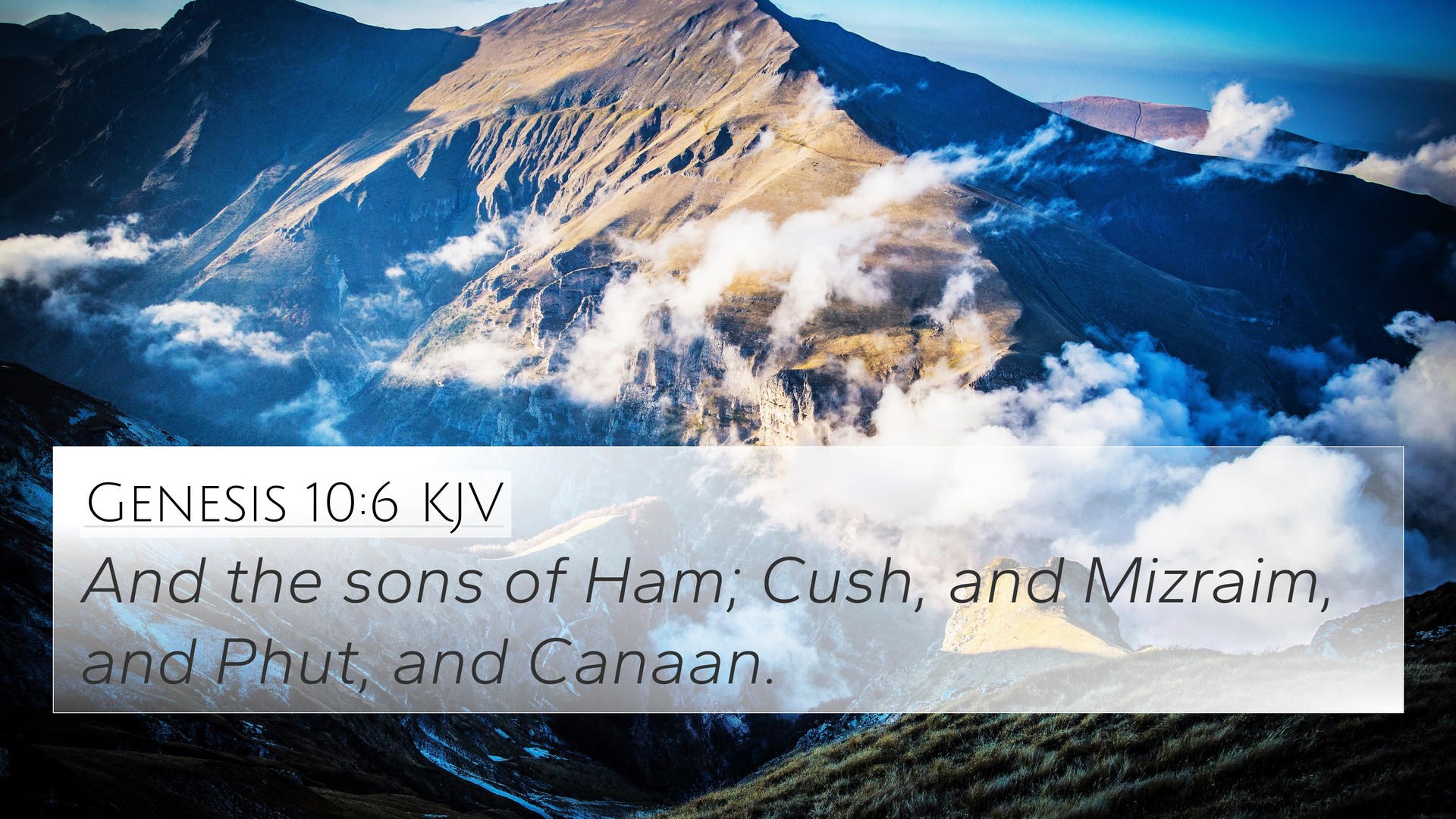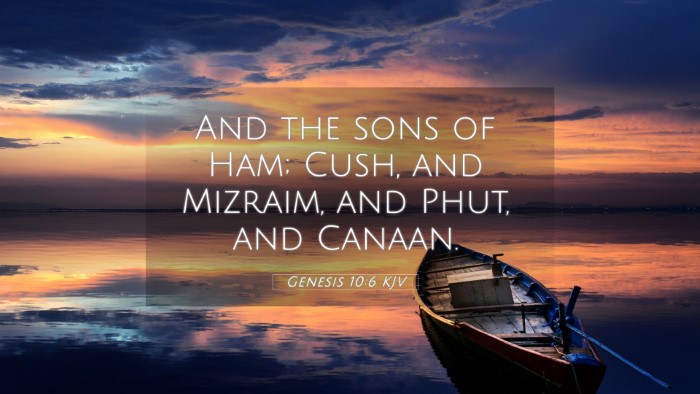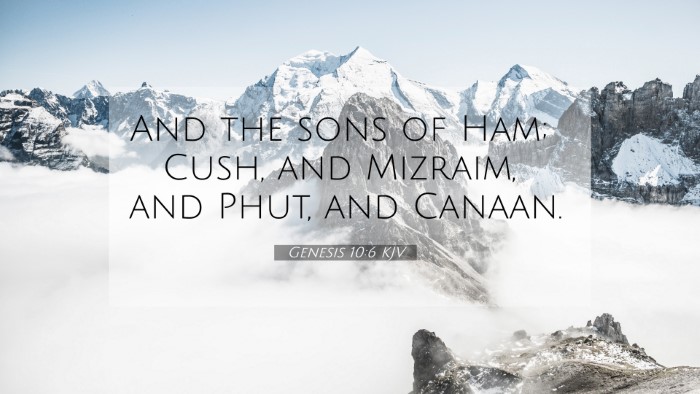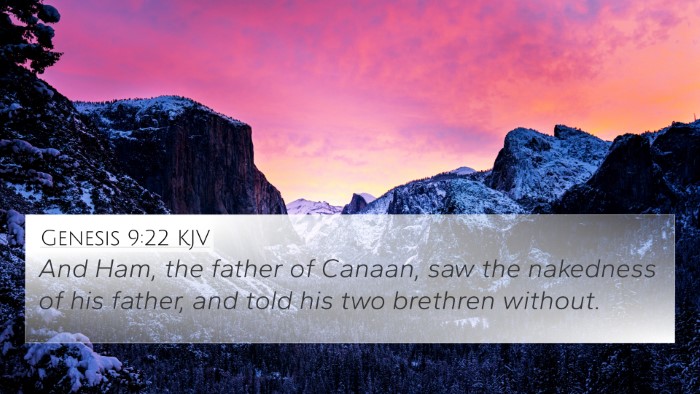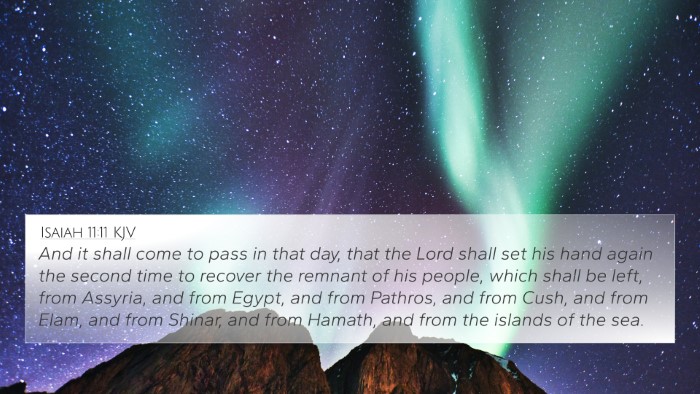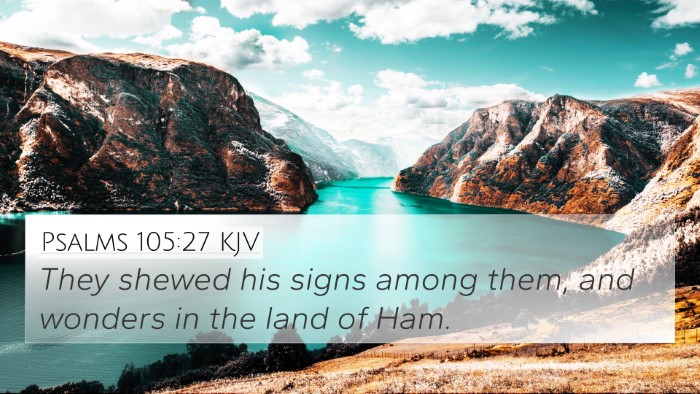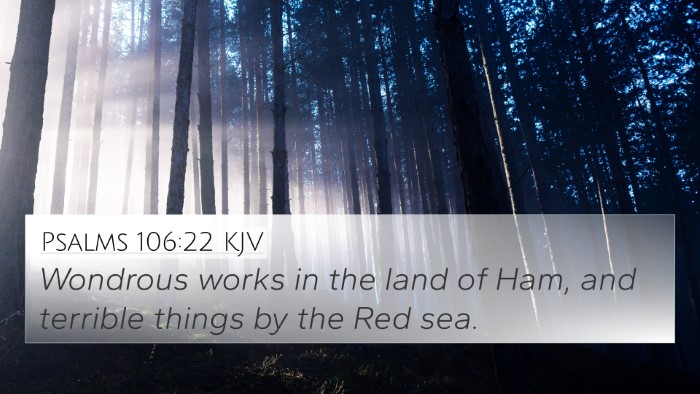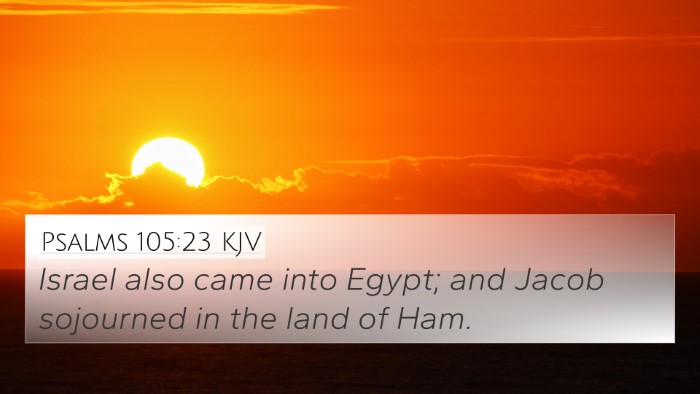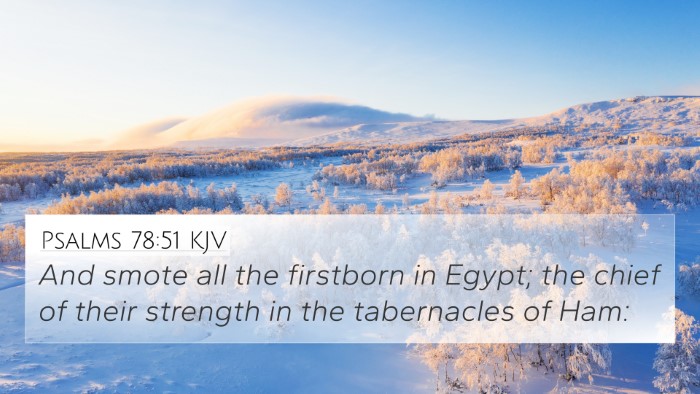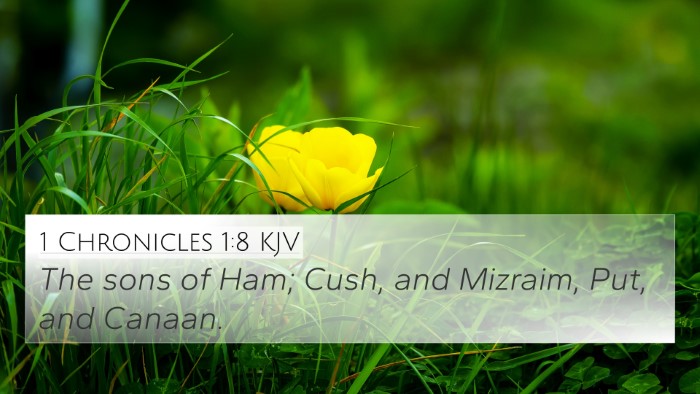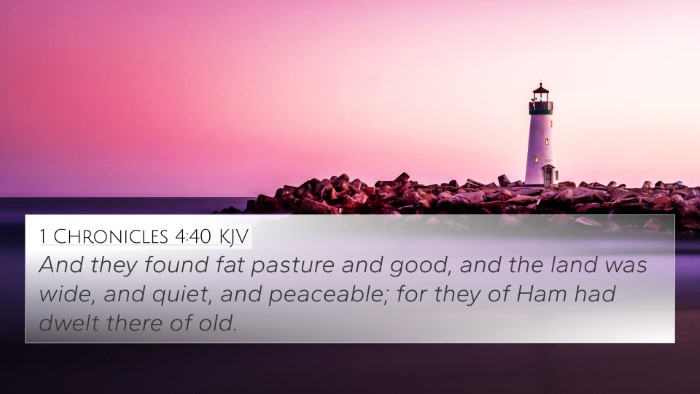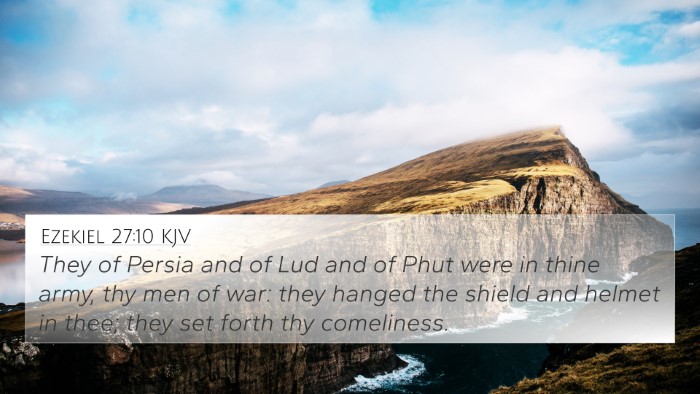Understanding Genesis 10:6
Genesis 10:6 states: "And the sons of Ham; Cush, and Mizraim, and Phut, and Canaan." This verse is part of the Table of Nations, which details the descendants of Noah's three sons after the flood, specifically focusing on the lineage of Ham.
Meaning and Implications
The significance of Genesis 10:6 lies in its genealogical nature, establishing a framework for understanding the origins of various nations and ethnicities in the ancient world.
Theological Insights
- Matthew Henry's Commentary: Henry emphasizes the importance of lineage in understanding God's plan for humanity. He notes that the descendants of Ham include some nations that would play crucial roles in biblical history, such as Egypt (Mizraim).
- Albert Barnes' Notes: Barnes highlights the historical implications of these names, suggesting their connections to various cultures associated with Africa and the Mediterranean. He presents this verse as part of the broader narrative of God's dealings with humanity.
- Adam Clarke's Commentary: Clarke elaborates on the significance of each son listed. He mentions Cush’s association with regions in modern-day Sudan, indicating how these early nations contributed to the development of civilization.
Cross-references and Connections
This verse connects to several other biblical passages that highlight similar themes of lineage and nations:
- Genesis 9:18-19: Introduces the three sons of Noah, emphasizing the division of the earth among them.
- Genesis 10:1-5: Covers the descendants of Japheth, providing broader context for Noah's descendants.
- Genesis 11:1-9: Relates to the Tower of Babel, showing how these descendants would come together and then disperse.
- Deuteronomy 2:10-12: Mentions the ancient peoples descended from Ham, such as the Emim and the Horim, providing a connection to the land of Canaan.
- Psalm 78:51: Refers to God striking down all the firstborn in Egypt, linking back to the descendants of Ham, particularly Mizraim.
- Jeremiah 46:2: Highlights Egypt’s role in biblical history, again tied to Ham’s lineage.
- Acts 8:27: Provides a New Testament reference with the Ethiopian eunuch, a descendant of Cush, illustrating the ongoing importance of these nations.
Thematic Connections
Genesis 10:6 can also be analyzed through thematic connections in Scripture:
- Covenantal Themes: Understanding the descendants of Noah highlights the breadth of God’s covenantal promises.
- Judgment and Mercy: The nations derived from Ham were central to narratives of judgment (e.g., Egypt's oppression of Israel) and mercy (e.g., the conversion of the Cushite in the New Testament).
- Identity and Diversity: The verse emphasizes the diversity in God’s creation and how nations arose and interacted with Israel.
Tools for Bible Cross-referencing
When seeking to delve deeper into the connections between Bible verses, consider utilizing these tools:
- Bible Concordance: A useful resource for finding keywords and their occurrences throughout the Bible.
- Bible Cross-reference Guide: Provides context and additional verses related to specific passages.
- Cross-referencing Bible Study Methods: Various methods can help in analyzing how verses connect thematically and historically.
Conclusion
Genesis 10:6 serves not only as a record of genealogies but also as a vital link in understanding biblical history and theology. By cross-referencing this verse with others, readers can gain a rich context that illustrates the enduring significance of Ham's descendants in the unfolding narrative of Scripture.
This passage invites a comparative Bible verse analysis to reveal how these ancient lineages continue to resonate in both Testaments, underpinning the connections between diverse biblical themes and teachings.
